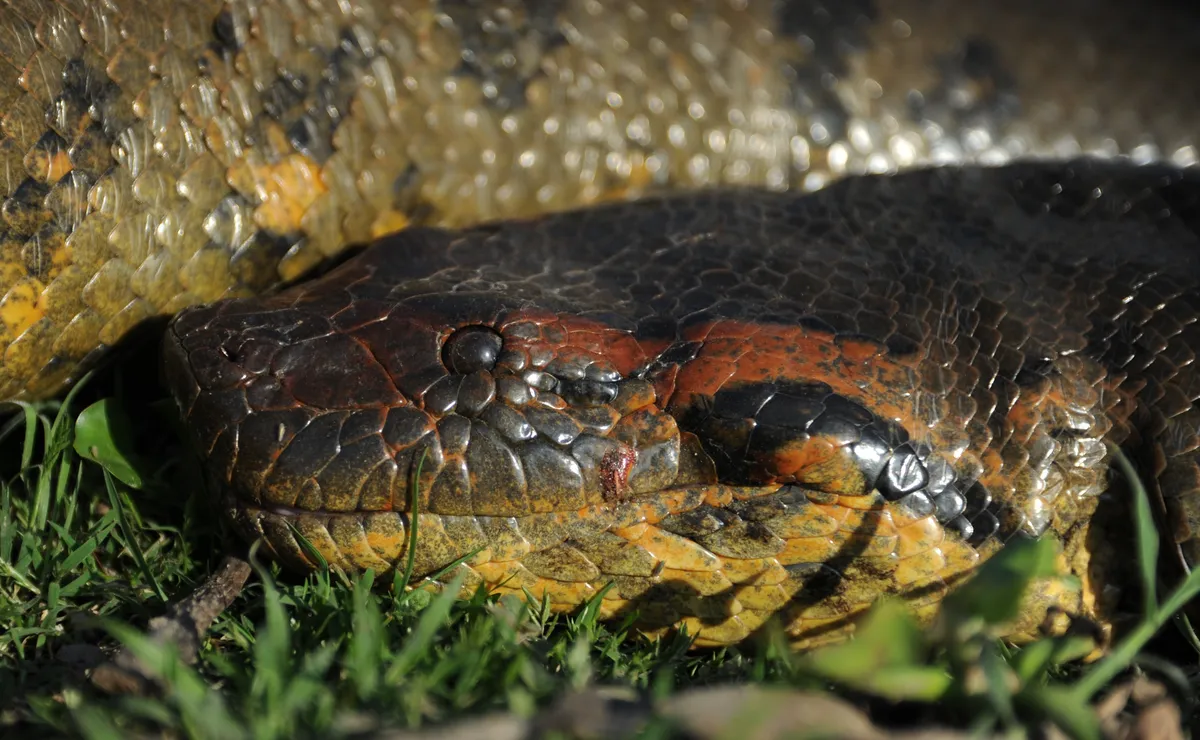
Remember the colossal snake from the 1997 cult classic film Anaconda? Many were frightened, some laughed, but at least we knew that such a thing couldn’t exist in real life. Or can it?
The emerald wonder of the Amazon rainforest just yielded a monstrous find: an 8-meter-long, 200-kilogram (26-foot-long, 440-pound) northern green anaconda, previously unknown to science.
This behemoth is the largest snake ever discovered. It’s not only bigger but also very genetically distinct from its southern cousin, raising questions about biodiversity and the Amazon’s fragile ecosystem.
A new giant anaconda
Dutch biologist Professor Freek Vonk from the University of Amsterdam, along with 14 other scientists from nine countries, stumbled upon this slithering giant during a National Geographic expedition for the upcoming Disney+ series Pole to Pole with Will Smith. The huge anaconda was lurking in the shallows lying in wait for prey when Vonk and the camera crew encountered it while diving in unspecified waters in the Ecuadorian Amazon. Vonk later shared a video snippet on Instagram of this extraordinary encounter, which quickly went viral.
“The size of these magnificent creatures was incredible — one female anaconda we encountered measured an astounding 6.3 meters long,” said study co-author Bryan Fry from the University of Queensland.
“There are anecdotal reports from the Waorani people of other anacondas in the area measuring more than 7.5 meters long and weighing around 500 kilograms,” Dr. Fry said, hinting that other much larger anacondas could exist.

Imagine a snake longer than a school bus and weighing as much as a grand piano. That’s the scale we’re talking about.
Genetic analysis revealed it wasn’t just a large green anaconda — it was a completely new species, distinct enough to warrant its own designation: Eunectes akayima, meaning “great snake” in a local indigenous language.
“Genetically, the differences are massive,” explains Fry. “Think humans and chimps — they’re 2% different. These anacondas? A whopping 5.5%!”
This newfound species, now known as the northern green anaconda, diverged from its southern relative, the green anaconda, a staggering 10 million years ago. The study’s lead author, Jesus Rivas, had suspected this kind of diversity for over 15 years.
“We noticed a significant genetic difference in samples from Venezuela compared to Peru,” Rivas said in a statement to the press. “This sparked a continent-wide collaboration to piece together the puzzle.”
Large but vulnerable
Anacondas are predominantly aquatic, ambushing prey as diverse as capybaras, caimans, and even deer. Unlike their venomous counterparts, these giants overpower their victims with bone-crushing constriction before swallowing them whole.
However, this discovery comes with a somber undertone. This vast ecosystem, harboring 20% of the world’s fresh water and boasting 16,000 known tree species, is under siege from deforestation, oil drilling, and unsustainable practices. Climate change is also altering the Amazon ecosystem, threatening this newly discovered wonder.
“The Amazon is under immense pressure,” warns Professor Vonk. “With over 20% of the rainforest already gone, the survival of these iconic giants hangs in the balance.”
Fry emphasizes the vulnerability of this species due to its limited range. “Compared to southern relatives, these anacondas are much more susceptible to climate change’s grip.”
Protecting the Amazon is crucial not just for the northern green anaconda but for countless other species that depend on this vibrant ecosystem. The discovery of this giant snake serves as a stark reminder of the ongoing environmental challenges and the importance of preserving one of the world’s most biodiverse regions.
Despite the looming threats, the discovery ignites excitement. Could more hidden giants lurk within the Amazon’s depths?
“Studying anacondas for 32 years,” reflects Rivas, “this discovery opens the door to countless possibilities. How many more species are waiting to be found?”
The new anaconda species was described in a study published in MDPI Diversity.
This article originally appeared in February 2024 and was updated with new information.









